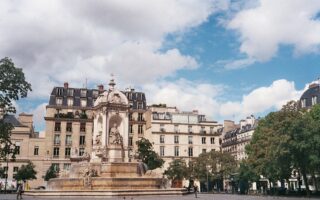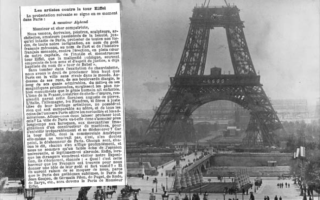Hôtel de la Marine: From Royal Furniture Depot to High-Tech Museum
- SUBSCRIBE
- ALREADY SUBSCRIBED?
BECOME A BONJOUR PARIS MEMBER
Gain full access to our collection of over 5,000 articles and bring the City of Light into your life. Just 60 USD per year.
Find out why you should become a member here.
Sign in
Fill in your credentials below.
Imagine stepping out of the Paris metro at Place de la Concorde in 2022 and straight into the 18th century. Sound impossible? Actually, you can do just that if you book a ticket to visit the Hôtel de la Marine, recently reopened after a six-year restoration.
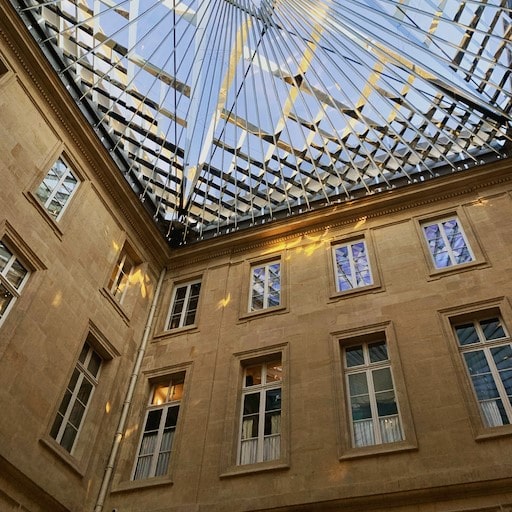
The covered courtyard at Hotel de la Marine. © Sarah Bartesaghi Truong
Constructed in the second half of the 1700s, the Hôtel de la Marine formed part of the grand urban scheme that constituted the Place Louis XV, today known as Place de la Concorde. In 1744, the king had fallen gravely ill and seemed to be dying. As he miraculously recovered, the city of Paris chose to mark the occasion with the erection of an equestrian statue, to be placed at the center of a new, grand square, modeled on the royal squares planned at the time of Louis XIV.
Faced with the task of finding a suitable plot of land, City Hall launched a call for tender. The winner was Ange-Jacques Gabriel, the king’s architect in chief, who suggested building it on the marshland that extended between the Tuileries and the Champs Elysées. In Gabriel’s project, the statue was to be placed in the middle of a perspective that would extend from the Seine towards the north, with a new road, the Rue Royale, linking the square to the Faubourg Saint Honoré.
Flanking the road, two identical, symmetrical buildings. On the other side, a balustrade overlooking the river. Only later, the Pont de la Concorde would be built, extending the perspective all the way to Palais Bourbon on the Left Bank, using the rubble salvaged from the Bastille fortress, recently torn down.
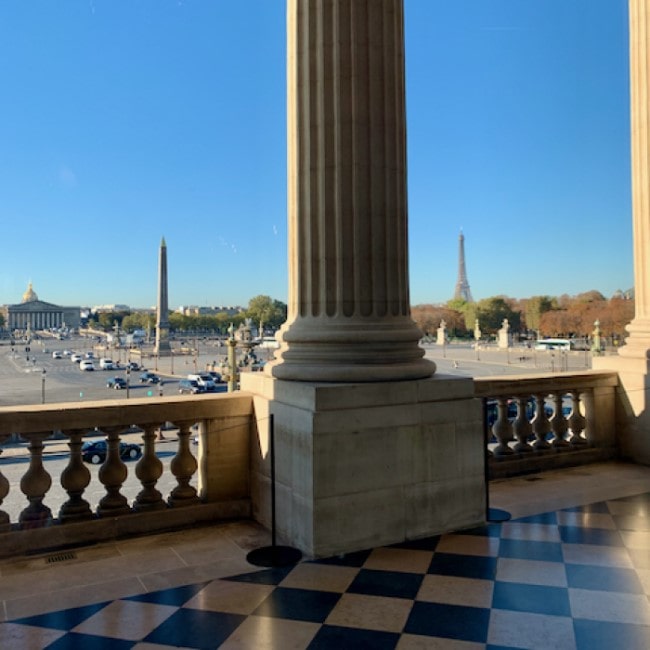
The obelisk has replaced the statue of Louis XV. © Sarah Bartesaghi Truong
If you wonder why you never noticed the statue, it’s because it — along with many other royal effigies — was the object of revolutionary wrath,
melted down to make cannons. Thankfully, the Hôtel de la Marine and its
twin (home today to the luxurious Hôtel Crillon and the French Automobile Club) withstood the French Revolution.
Upon its completion, the building to the right of the Rue Royale was destined to house the Garde-Meuble de la Couronne, the royal furniture repository instituted by the Sun King. Until Louis XIV’s decision to take up permanent residence in Versailles, the king and his court would travel from one royal residence to the next in the course of the year. Furniture and home accessories would need to be moved and stored, a vast undertaking that required a central repository.
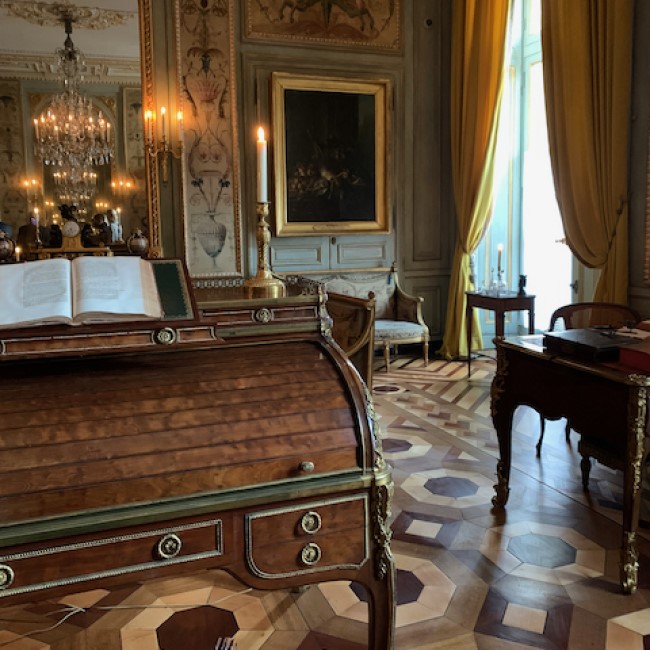
The superintendent’s office at the Hotel de la Marine. © Sarah Bartesaghi Truong
For about 25 years, the superintendent (first Pierre-Elisabeth de Fontanieu then Marc-Antoine Thierry de Ville d’Avray) lived in the building, and from here managed a complex enterprise which comprised storage rooms, workshops and exhibition galleries. It was the Crown’s exclusive shopping mall, but also a powerful diplomatic tool, where French excellence and spending power would be on full display. It housed not only furniture, commissioned to the best artisans like Riesner, but was also home to furnishings, from carpets and tapestries to porcelain, and, most importantly, the Crown Jewels.
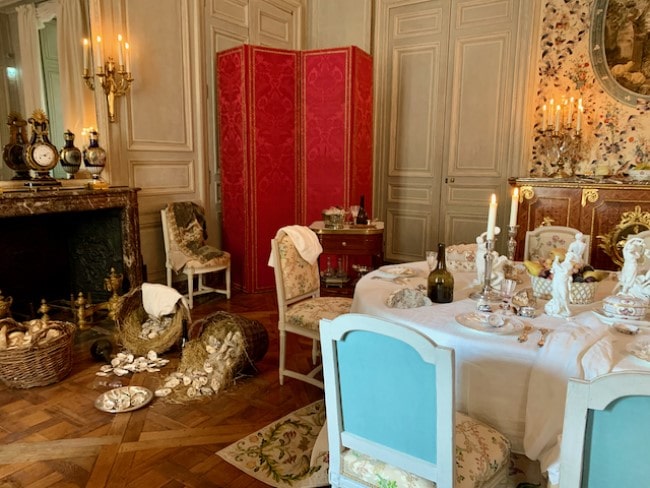
The superintendent’s dining room. © Sarah Bartesaghi Truong
But with the French Revolution, the royal collections housed by the Garde Meuble were dispersed: either sold or stolen, as was the case for the Crown Jewels in 1792. The keen observer will see that there is still a mark on one of the window shutters on the main floor, an opening cut in the wood by the robbers to access the room where the gem collection was being kept. Historians believe it was an insider job, rendered easy by the fact that only two guards were on duty that night.
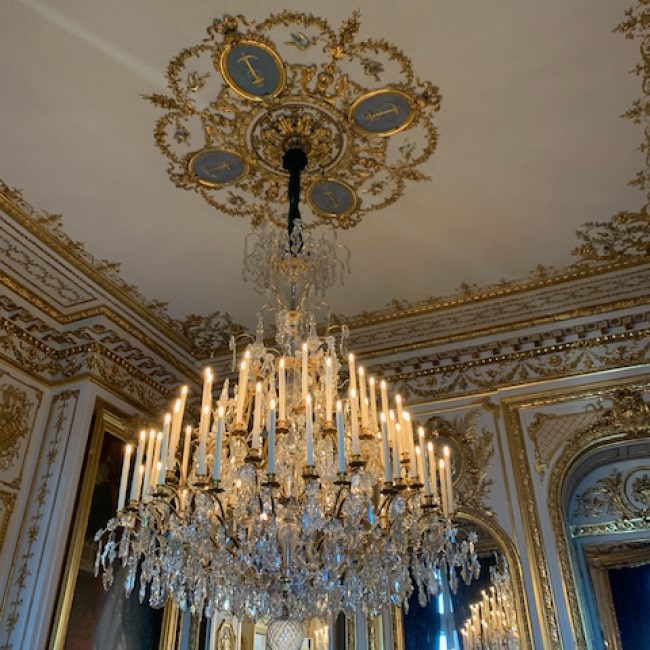
Anchor-shaped medallions paying tribute to the navy. © Sarah Bartesaghi Truong
Next, the French Navy High Command moved in and stayed here until 2015. The building underwent only minor transformations, evident in the excess of gilding, typical of the Second Empire, featured in some of the state rooms. Tribute is paid to the storied past of French naval explorers, including Jean-François de Galaup, Count La Pérouse, who disappeared during a round-the-world sailing expedition commissioned by Louis XVI. The king was so worried about him that, as he was being transported to Place de la Concorde where the guillotine was waiting for him, he is said to have enquired about the explorer’s fate.
It is this storied past that the renovation brings to life in a very lively way. Upon arrival, the visitor gets equipped with a sleek set of headphones. The recorded presentation brings to life the story of the building and its use before and after the Revolution. The decor has been restored to its 18th- and 19th-century splendor.
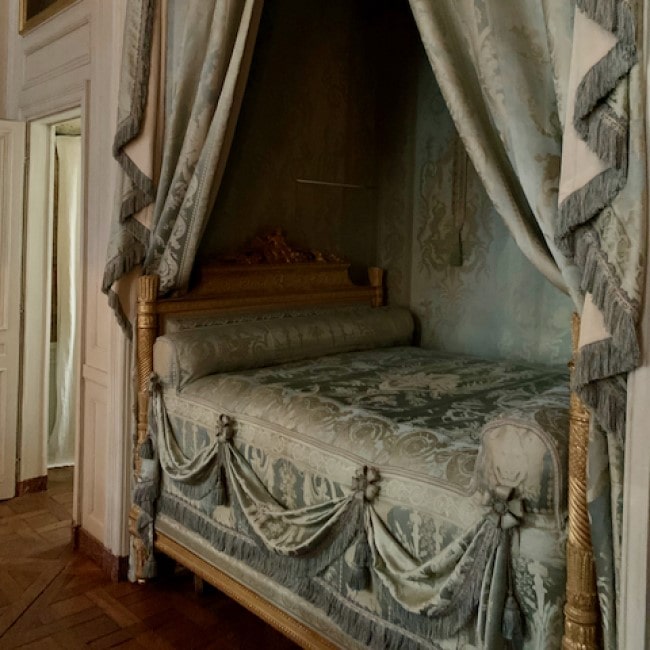
Fabrics woven using old artisanal techniques at the Hotel de la Marine. © Sarah Bartesaghi Truong
Thankfully, the soundproof ceilings and MDF wall coverings dating from the 1970s, when the building housed the office of the Navy, managed to preserve the stuccoed ceilings and the paneled wood underneath. Even some of the original parquet floors have been protected by the industrial carpeting laid down in the most utilitarian phase of its usage. While not all the original furniture could be put back, the Centre des Monuments Nationaux has done an outstanding job at finding historically faithful
equivalents, all the way down to commissioning made-to-measure wallpaper and fabrics, produced using the same artisanal techniques used in the 18th century.
Besides the historical reconstruction of the building’s prestigious past, the visit is also a chance to visit the Al Thani Collection. On display in a dedicated space, situated at the end of the tour and only accessible if one has purchased a Grand Tour ticket, is a rotating portion of the collection amassed by Sheik Hamad bin Abdullah Al Thani.
Encyclopedic in nature, with no historical or geographical focus, the artworks comprising it celebrate human creativity and the power of art to bridge cultural and
political divides. The first permanent outpost for the Al Thani Collection is the result of an agreement between the Centre des Monuments Nationaux and the Al Thani Foundation, in recognition of the very generous financial contribution towards the restoration of the monument.
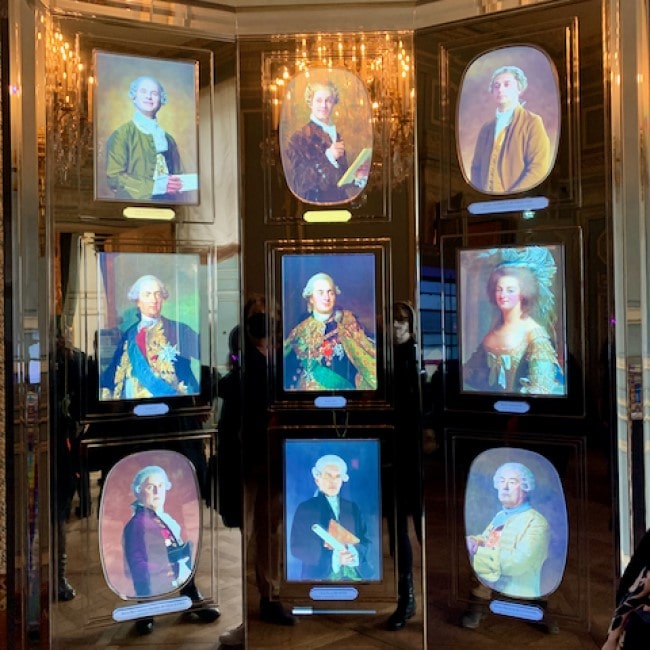
Giant screens displaying impersonators of historical figures. © Sarah Bartesaghi Truong
The museum is probably the first full-scale attempt to integrate modern technology into the visitor’s experience. The visitor’s headset pauses and resumes its storytelling as one moves from room to room, without fussing over the numerical prompts common for standard audio-guides. Giant screens display actors impersonating the various historical characters that inhabited the place and telling their stories, while another, circular touch screen follows the naval explorers of days past in their adventures. While I found the technology well executed, some of the props felt too gimmicky for me. The other visitors did not seem to mind, especially the younger ones, who certainly found the experience entertaining.
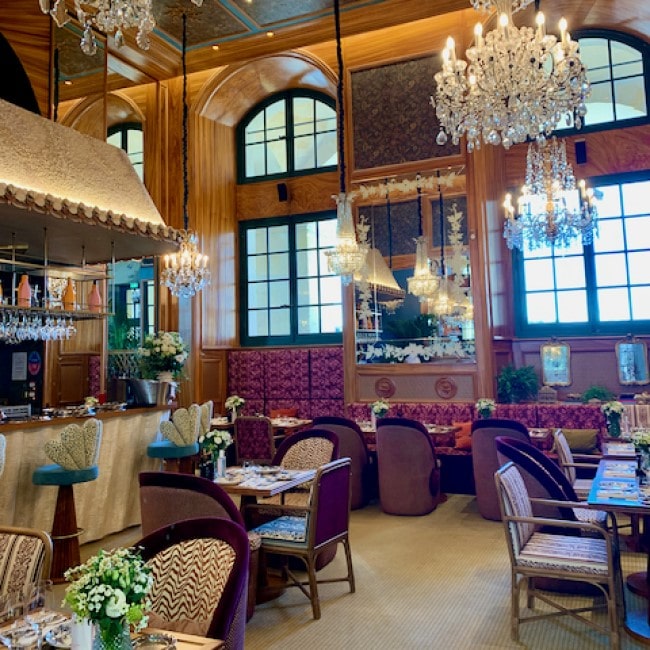
Café Lapérouse. © Sarah Bartesaghi Truong
For the visitor too pressed for time to head to Versailles, but still eager to get acquainted with the glory days of the French monarchy, the Hôtel de la Marine is a welcome addition to the Parisian museum scene. Make sure to make the most of your outing with a stop at one of the two restaurants on the ground floor: for a more formal pit-stop, Mimosa by Michelin-starred chef Jean François Piège; for a more casual occasion, Café Lapérouse, a near-instant hit for the most fashionable crowds.

The loggia of Hotel de la Marine overlooking Place de la Concorde. © Sarah Bartesaghi Truong
Hôtel de la Marine (2 place la Concorde, 8th arrondissement) is open daily from 10:30 am to 7 pm. Late closures on Friday evening at 9:30 pm.
Metro: Place de la Concorde (lines 1, 8, 12)
The “salons and loggia” circuit, which takes 45 minutes, costs 13 euros; the “Grand Tour,” which lasts 1.5 hours, costs 17 euros. Free for visitors under 18 years of age.
Lead photo credit : Twin buildings flanking Rue Royale © Sarah Bartesaghi Truong
More in history, Museum, place de la concorde



